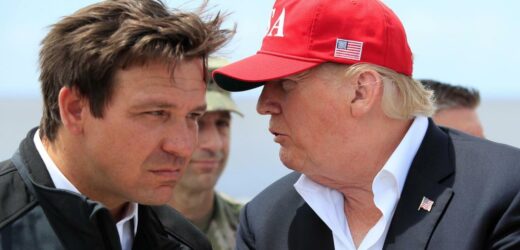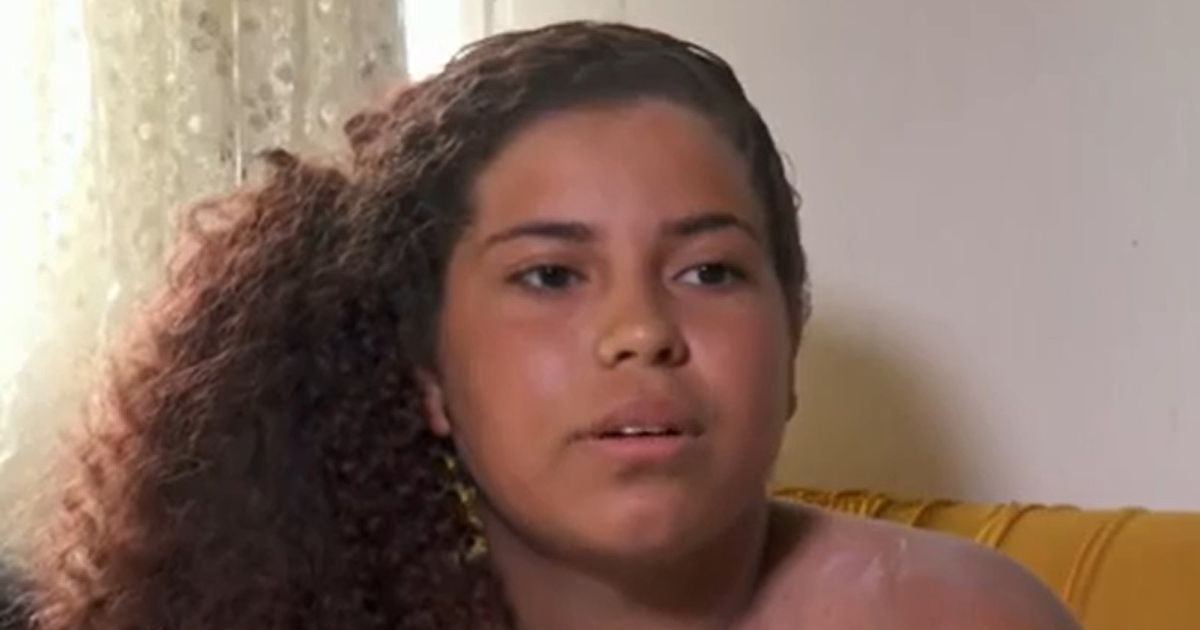By STEVE PEOPLES and JILL COLVIN (Associated Press)
DAVENPORT, Iowa (AP) — In his first trip to Iowa this year, Ron DeSantis did not take any questions from voters. He ignored the local press. He avoided the diners, pizza parlors and ice cream shops that have helped presidential contenders in the leadoff voting state showcase their personal appeal and charisma for decades.
For DeSantis, a leading Republican presidential prospect, it was simply business as usual.
The hard-charging Florida governor has emerged as a potent force in national politics while eschewing the personal connections, intimate moments and unscripted questions that have long fueled successful White House bids in the states that sit atop the presidential primary calendar. And as DeSantis begins to introduce himself to primary voters in the weeks leading up to his expected announcement, he is showing little interest in changing his ways.
Allies insist he doesn’t need to adjust anything, pointing to his dominant 19-point reelection victory last fall. But already, his Republican rivals — led by former President Donald Trump — are working to highlight the governor’s go-it-alone approach and impersonal style by leaning into their own personal interactions on the campaign trail.
The risks for DeSantis are becoming increasingly obvious in smaller rural states like Iowa, New Hampshire and South Carolina, which will host three of the first four presidential primary contests in 2024.
“No one’s gotten to know him the way they need to get to know him. I don’t know if they ever will,” New Hampshire Gov. Chris Sununu, himself a potential candidate, said of DeSantis during a recent interview. “Do you think Ron DeSantis has ever sat down for a cup of coffee with a reporter? No. It’s like physically not in him. He can’t do it. He doesn’t have that social connection with folks.”
Perhaps no one is paying closer attention than Trump, who views DeSantis as his only real rival for the Republican presidential nomination.
While DeSantis has taken a cloistered approach, Trump has been maximizing his interactions with voters and the press as he begins to visit early voting states — an effort that aides say is part of a larger push to contrast Trump’s strengths with DeSantis’ perceived weaknesses.
During his first real day of campaigning in late January, Trump stopped by a beloved fried chicken and burger joint in West Columbia, South Carolina. He posed for photos with patrons and ordered a chocolate-dipped ice cream.
One of the workers behind the counter offered Trump an impromptu prayer, and the moment went viral. After seeing the extraordinary response, the campaign leaned in.
It quickly planned a visit to East Palestine, Ohio, to meet with residents and local officials affected by a toxic train derailment. Before leaving, Trump stopped at a local McDonald’s, where he signed autographs, passed out red “Make America Great Again” caps and ordered food for his staff and first responders.
“I know this menu better than you do,” he told the smiling cashier.
In Iowa on Monday, Trump directed his motorcade to make a quick stop at the Machine Shed Restaurant, a longtime fixture in the eastern city of Davenport.
“So, how’s the food here?” he boomed as he strolled in, shocking patrons and leaving the staff giggling in delight.
Trump shook hands, slapped backs and posed for pictures with anyone who wanted one.
While such scenes were hardly common during Trump’s first two campaigns, the former president is taking a new approach as he wages his third presidential bid. The professional host and career glad-hander relishes personal interactions with supporters, and even longtime critics acknowledge his charisma in one-on-one interactions.
Such stops give voters “a way to see the president in a different light,” said Trump spokesperson Steven Cheung.
“Usually they see him on camera or at a rally or in an interview. They don’t necessarily get to see him up close,” he said. “And this is one way to bridge that gap. And it’s also one way to make this campaign more distinct.”
Indeed, Trump’s personal approach stands as a clear contrast to DeSantis, who is known for being much more guarded — especially when the media is present.
After two presidential campaigns and four years in the White House, Trump is extremely well practiced at taking tough questions from the national press. And his team has been working to make him more accessible to reporters.
He has been inviting small groups to travel aboard his campaign plane. During trips to South Carolina and Iowa, he took questions from local press.
Trump did the same with voters after delivering a long speech Monday in Iowa, answering several questions from a lucky few of the thousands who packed into a downtown Davenport theater. Aides noted that Trump’s crowd eclipsed DeSantis’, and Trump acknowledged, tongue in cheek, that it was “dangerous” to invite unscripted questions after a well-received speech.
He did it anyway for 20 minutes.
DeSantis’ allies strongly disagree with the growing perception that he is insulated and not sufficiently committed to building personal relationships with voters and stakeholders in key states.
They note that he is not a presidential candidate. Should he decide to enter the contest — which he is widely expected to do after his state legislature adjourns in May — he will likely adopt a campaign strategy similar to the one that took him to all of Florida’s 67 counties before his November reelection. Over that time, they point out, he regularly made unscripted appearances at restaurants, bars and high school sporting events.
When DeSantis met with New York City law enforcement officials last month, for example, he stopped by a Staten Island bagel shop.
One major difference between DeSantis and Trump is that Trump has welcomed press coverage of his unscripted moments.
While Trump often bashes the media at his raucous rallies, he is also an avid consumer of the news and craves the attention. DeSantis, by contrast, employs a consistent disdain for the mainstream press in public and in private.
It’s much the same with fellow Republican governors and business leaders. DeSantis sees little need in developing relationships with Republican peers in other states, major corporations or the mainstream media — aside from a few allies in the conservative press.
The Florida governor’s relationship with the media is strained to say the least.
He regularly schedules press conferences but often holds them outside major media markets with only a few hours’ notice, making it virtually impossible for the journalists who best know him and his policies to get there in time to ask tough questions. Usually, he packs such events with supporters.
On Thursday, for example, he hosted a news conference at a restaurant an hour away from Tampa.
He got only a handful of questions, all of which appeared designed for him to highlight his own positions. One journalist asked him about the need for babies to get the “jab,” a derisive term conservatives use to describe the COVID-19 vaccine.
Scott Jennings, a Republican political analyst, said DeSantis’ contempt for the media is central to the Florida governor’s brand. And his cautious approach could help project a more professional operation in contrast to Trump’s freewheeling style.
Still, Jennings said, DeSantis’ approach is “inherently risky.”
“Nobody’s ever really done it before,” he said. “But my instinct is Republicans are going to love it.”
Hogan Gidley, a former Trump aide and veteran of presidential politics, said it’s critical for presidential candidates to hone their policies and performances with unscripted moments in key states like Iowa, New Hampshire and South Carolina before an official announcement.
“A large part of that includes making personal connections with activists, with grassroots leaders, with elected officials — all the ones who will be responsible for the blocking and tackling needed to win a primary in those states,” Gidley said. “Anyone who ignores that does so at their own political peril.”
___ Associated Press writer Anthony Izaguirre contributed to this report from Tallahassee, Florida.
Source: Read Full Article


